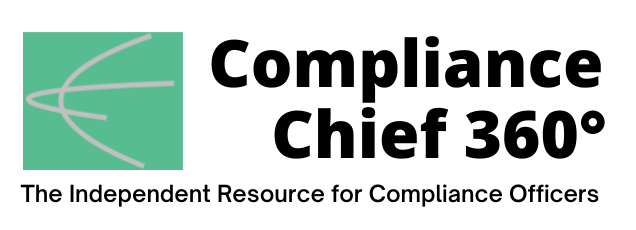
Of 57 companies examined in the “Racial and Gender Pay Scorecard” report, released this week by the investment management firm Arjuna Capital and shareholder advocacy firm Proxy Impact, only seven—Pfizer, Mastercard, Bank of New York Mellon, Starbucks, Adobe, American Express, and Citigroup—received an “A,” while twenty-four companies receive a failing grade.
The fifth edition of the Scorecard provides pay equity grades based on quantitative disclosures (versus qualitative assurances) by companies taking concrete steps to close racial and gender pay gaps. Investors have engaged all of the 57 companies in the ranking through the shareholder proposal process and asked them to improve their public pay equity disclosures.
“Women and people of color are almost always deeply underrepresented in higher paying positions,” said Michael Passoff, CEO at Proxy Impact. “Median pay gap data helps shed light on that problem, and studies show that companies that disclose pay gaps are more likely to fix them. We are already seeing more company and shareholder support for racial and gender pay gap reporting and industry leaders are starting to emerge.”
Report Findings
- A failing grade of F is awarded to slightly less than half (24) of the total group of companies, including Goldman Sachs, Facebook, Disney, Oracle, Walmart, Best Buy, and Biogen, for a failure to disclose quantitative racial and gender pay gaps.
- Nine companies’ scores fell from last year, including Facebook, Google, Texas Instruments, and HP, for failing to disclose quantitative pay gaps within the last two years. Investors previously engaged and reached agreements with Facebook, Google, and Texas Instruments, yet those commitments have not been upheld through the pandemic. Facebook fell from a C to an F, and Google from a C to a D.
- Thirteen companies improved their scores year-over-year. McDonald’s managed the largest score increase from an F to a B, as it began disclosing adjusted racial and gender pay gaps.
- While many companies have felt comfortable disclosing adjusted pay gaps in the past, more and more companies are beginning to disclose unadjusted median racial and gender pay gaps beyond their U.K. data, where it is mandated. The Scorecard found that eleven companies currently disclose, or have committed to disclosing their median U.S. racial and global gender pay gaps in 2022. This includes: Mastercard, Bank of New York Mellon, American Express, Citigroup, Adobe, Starbucks, Pfizer, Microsoft, Target, Home Depot, and Chipotle.
- Adobe and American Express earned an A grade this year after disclosing unadjusted median racial and gender pay gaps, topping the list due to best-practice disclosures.
- Nine companies— Microsoft, Nike, Target, Apple, Wells Fargo, McDonald’s, Bank of America, Intel, and Verizon—earned a B grade for their efforts to disclose and act on their racial and gender pay gaps.
- Over the last seven years, 143 shareholder proposals requesting pay gap disclosures have been filed at more than 80 companies (including the 57 in the Scorecard).
Still a Wide Pay Divide
The Scorecard highlights an increasing number of companies that are setting a new standard for the accountability and transparency needed to close persistent racial and gender pay gaps. Last year, U.S. Black worker’s median earnings represented, on average, 64 percent of white worker’s earnings and women’s earnings represented 83 percent of men’s earnings.
Unfortunately, the COVID-19 pandemic has exacerbated pay inequity, as millions of minorities and women were forced to leave the workforce. One study estimates that women lost nearly 40 years of progress during the beginning months of the pandemic.
“The pandemic has been a one-two punch for women and people of color who disproportionately suffered from the 2020 job losses,” says Natasha Lamb, managing partner at Arjuna Capital. “It’s no surprise that racial and gender pay equity has become a key area of focus for investors, who are demanding more from companies. Just last week, nearly 60 percent of shareholders voted in favor of an investor proposal asking Disney to disclose racial and gender pay gaps, underlining the material importance of pay equity to institutional investors.”
Yet, Pfizer, a company that is all too familiar with the challenges of the pandemic, managed to far outpace its peers and top this year’s Scorecard. The company provides an example of best-practice pay equity reporting as it discloses adjusted and unadjusted pay gaps and a comprehensive methodology of its pay equity analysis. Within the last year, Pfizer managed to narrow its racial and gender pay gaps and began including executive leadership in its pay equity analysis.
Pay Equity Reporting Standards
The Racial & Gender Pay Scorecard assesses companies’ pay equity data against best-practice pay equity reporting standards, which consist of two important elements: (1) unadjusted median pay gaps, assessing how jobs are distributed by race and gender and which groups hold the high-paying jobs, and (2) statistically adjusted gaps, assessing pay between minorities and non-minorities, men and women, performing similar roles. While statistically adjusted gaps provide one piece of the story, median pay gaps are a tougher and more revealing standard. Median pay gaps show, quite literally, how the company assigns value to its employees through the roles they inhabit and the pay they receive.
Actively managing pay equity is a business imperative, the report’s authors assert, as it leads to improved representation, superior stock performance, and higher return on equity. It’s also good for the economy, they say. Citigroup estimates that closing U.S. minority and gender wage gaps 20 years ago could have generated 12 trillion dollars in additional national income and contributed 0.15 percent to U.S. gross domestic product per year. McKinsey projects that closing the racial wealth gap could increase GDP by 4 to 6 percent by 2028, netting the U.S. economy $1.1 trillion to $1.5 trillion. ![]()
Joseph McCafferty is editor & publisher of Compliance Chief 360°

